![]()
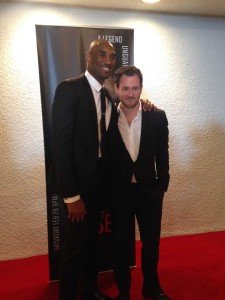
Now, almost 19 years onward, in the sunset of his career at age 36, Bryant has proven himself as more than just an NBA superstar; he has broken many scoring records on the way to winning five league championships and is widely considered one of the best players of his era and likely one of the peak players in league history.
With Bryant still active, albeit hobbled by injuries, the time was finally right for a documentary about his legendary career. Enter English producer Martin Desmond Roe, who admittedly knew little about the game of basketball but found the subject of maximum success in any chosen field a ripe subject for a film. As such, Roe’s team embarked on early meetings with Bryant, though, initially, the exact target of the film was unfocused. “In the very early stages, it was Gotham [Chopra, the director] and Kobe who met each other through a mutual friend – Michael Jackson,” Roe explained. “They had the topic of a film and what they might do together—they were interested in what makes people great as opposed to good. Michael Jackson walks into a room and is universally regarded as great. What is that defining quality?”
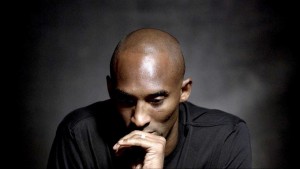
After a year of principal photography including 19 separate interviews with Bryant, Roe delivered the star athlete a version of the movie, the first version he saw. “At that point, he became super invested,” Roe explained. “We all moved down to Newport Beach where he lives. He was involved every day from the beginning of September on.”
As Bryant was on board from summer of 2014 until the first airings on Showtime this spring, the nature of the project began to evolve with the eventual title of Kobe Bryant’s Muse. “We were proud of the first version—it was very cinematic and very honest,” Roe detailed. “The genius of Gotham the director is to create an environment of real trust and security. [Kobe] said, ‘My god – this is like therapy.’ Once we realized we had that, [we had] the movie.”
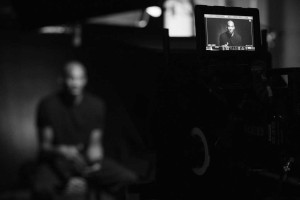 Not only did Roe and Chopra have 18 hours of material with Bryant, but they additionally interviewed most of the major NBA figures who have crossed his life: players, coaches, friends, and old rivals. “We did 30 other interviews none of which made it into the movie,” he said, noting that they kept returning to Bryant’s interviews to tell the star’s own story. “Once we hit on telling his story directly into camera – a confessional – it was a revelation. He’s such an interesting guy and so extremely smart. It’s about getting the relationship and the trust with somebody like Kobe. This tends to be made about people once their careers are over; he’s still very much active.”
Not only did Roe and Chopra have 18 hours of material with Bryant, but they additionally interviewed most of the major NBA figures who have crossed his life: players, coaches, friends, and old rivals. “We did 30 other interviews none of which made it into the movie,” he said, noting that they kept returning to Bryant’s interviews to tell the star’s own story. “Once we hit on telling his story directly into camera – a confessional – it was a revelation. He’s such an interesting guy and so extremely smart. It’s about getting the relationship and the trust with somebody like Kobe. This tends to be made about people once their careers are over; he’s still very much active.”
During post-production, with Bryant recovering from an Achilles tendon injury, he made a comeback to the Lakers for the 2014-15 season before suffering yet another injury – a reality which made it into the film. “We got the premiere date extended by two weeks so we could put the rotator cuff tear in there,” Roe revealed. “We had no choice but to end with it. It was amazing watch him work through the Achilles workout and building the strength and the resistance back up. It was agony, but the truth of this year. The ending felt like an agonizing experience.”
Of course, when a documentary subject is still an active participant in his career, one can never predict where a story will go, and Roe struggled with Bryant’s story as it kept changing. “We had quite a few different endings because the movie kept taking longer and longer,” he confessed. “We filmed [Bryant] the very first day of the season, running down into the Staples Center through the archway onto the court. ‘The A story will be recovery from Achilles, and the B story is how dealing with challenges will be your mantra.’ Nobody has ever come back from Achilles, but you have no choice, and you come back onto the court. We were designing that [ending] when the rotator cuff injury happened.”
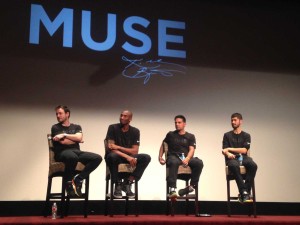 Additional material that Roe and his team acquired concerned Bryant’s home life and life after basketball and his “basketball bible” where the player breaks down being 16-17-years-old watching tape of NBA legends Larry Bird and Michael Jordan, showing how he learned from them. Alas, such valuable passages and other sections were excised in the editing room. “In the end, it didn’t fit the mood of the story,” Roe said. “We were all in one room – very collaborative and quite confrontational. The tone is being set for a competition of ideas with an alpha such as Kobe. ‘Is that good enough? Who’s got the best idea?’ It was a very small team.”
Additional material that Roe and his team acquired concerned Bryant’s home life and life after basketball and his “basketball bible” where the player breaks down being 16-17-years-old watching tape of NBA legends Larry Bird and Michael Jordan, showing how he learned from them. Alas, such valuable passages and other sections were excised in the editing room. “In the end, it didn’t fit the mood of the story,” Roe said. “We were all in one room – very collaborative and quite confrontational. The tone is being set for a competition of ideas with an alpha such as Kobe. ‘Is that good enough? Who’s got the best idea?’ It was a very small team.”
In the end, only ten people dedicated a full 18 months of their lives to the project. In addition to Roe, Bryant, and Gotham, producer Jake Bloch was the key instigator of the entire venture. “He was on Gotham’s cricket player film,” said Roe. “He brought me onto this one because it was a slightly larger scale. Between us, we shot 75% of the movie. We also did days and days of editing, all hands-on involved. We had amazing editors [Derek Doneen and Jim Hession] and a wonderful writer brought in from the TV world – Jacob Colman. His job was to find the best story. We were crafting it – if we don’t have it right now, we can get it. We needed someone in there with a writing brain.”
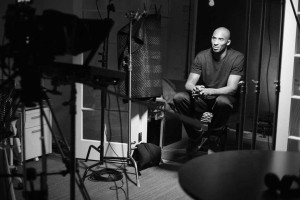 Prompted to indicate the most crucial personal qualities which drove Bryant’s nearly unprecedented success, Roe cited single-mindedness, focus, and dedication. “Everything he decides to do, he does it absolutely,” Roe stated. “It’s very rare for people to have that clarity of purpose. Most talented people have that, but they do allow friendships and need to get in the way. Kobe seems to be cut from a different cloth. [After Shaquille O’Neal left the team in 2004, having won three championships with Bryant], Kobe could not relax unless he won two more. He got into four more finals—he had a purpose not to give up on that.”
Prompted to indicate the most crucial personal qualities which drove Bryant’s nearly unprecedented success, Roe cited single-mindedness, focus, and dedication. “Everything he decides to do, he does it absolutely,” Roe stated. “It’s very rare for people to have that clarity of purpose. Most talented people have that, but they do allow friendships and need to get in the way. Kobe seems to be cut from a different cloth. [After Shaquille O’Neal left the team in 2004, having won three championships with Bryant], Kobe could not relax unless he won two more. He got into four more finals—he had a purpose not to give up on that.”
Kobe Bryant’s Muse can be found this spring in heavy rotation on Showtime, with the cable channel and Kobe Inc. in Newport Beach having both provided production and post-production funds. “I come from the independent world,” Roe related, “but I couldn’t believe how we pushed [the release date] three times, but [Showtime] were resolutely supportive. We hope whatever we do next, we can go to them.”
Postscript: Bryant is planning on utilizing the filmed materials which did not make it into the final Showtime film down the line as extra features via Kobe, Inc., an enterprise which will comprise his entire focus after the 2015-2016 NBA season when Bryant plans to retire from the Lakers.





